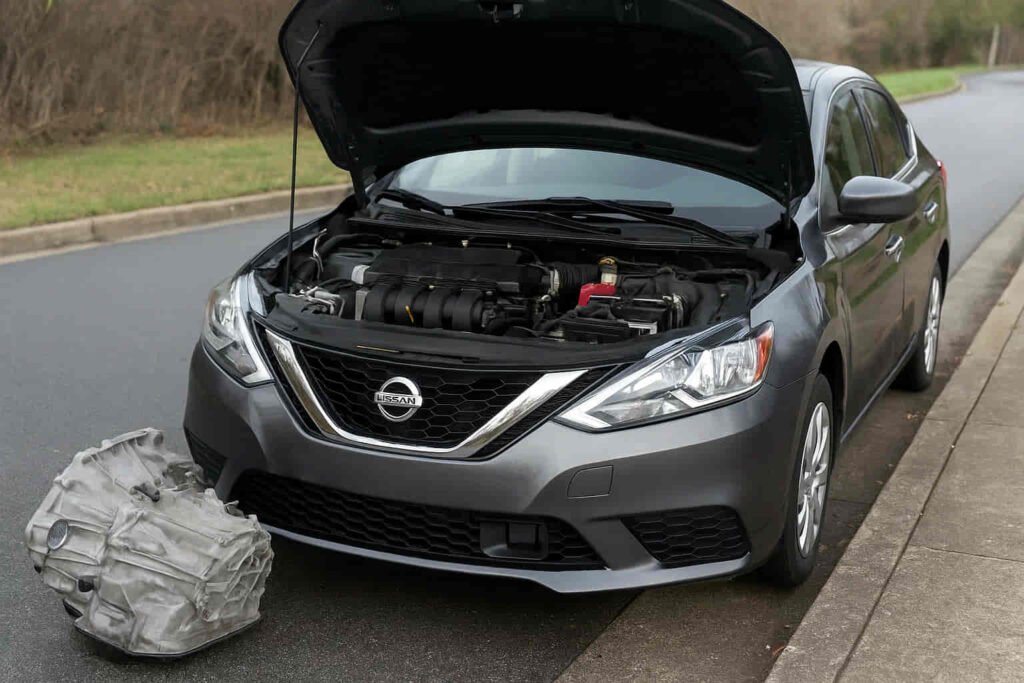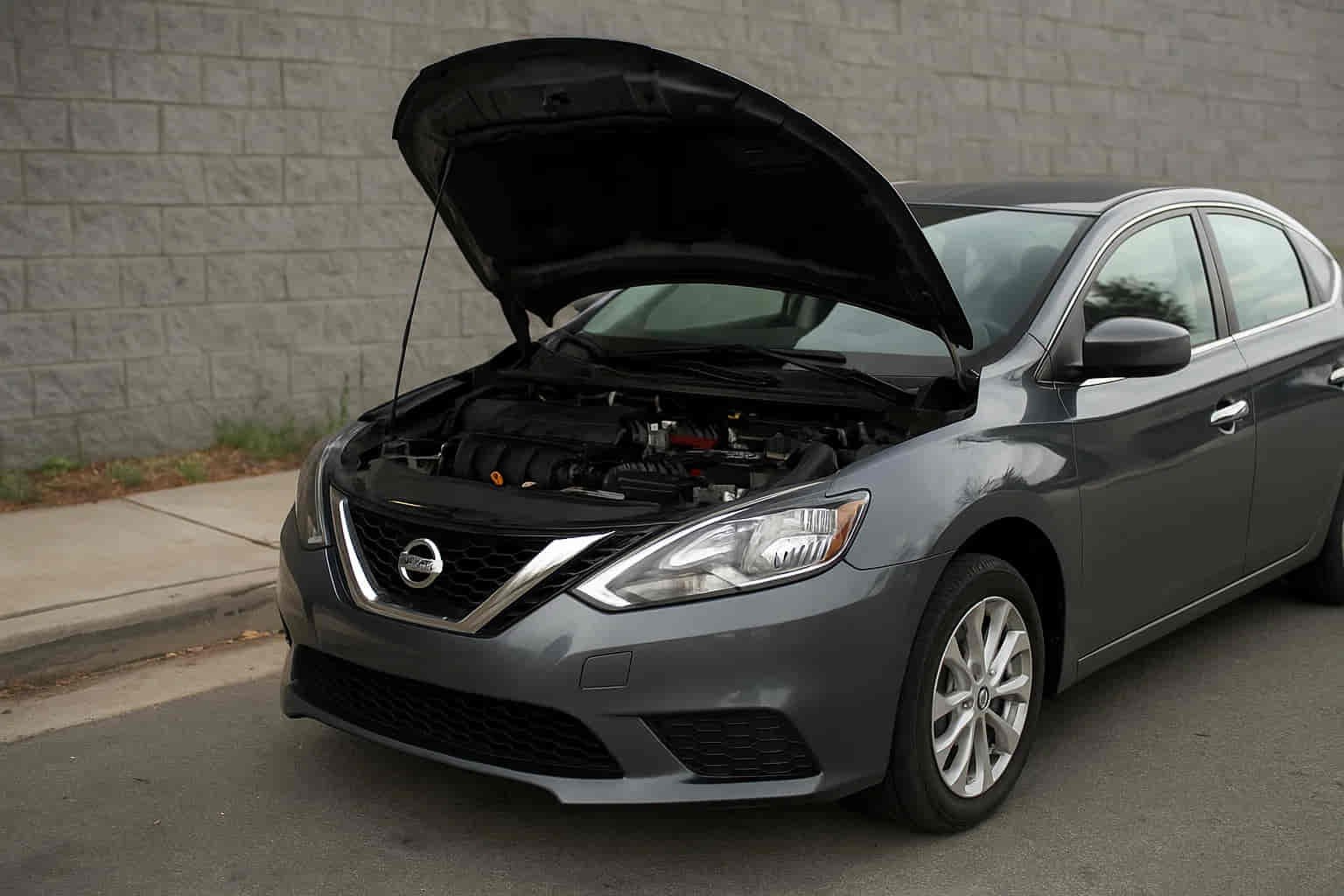If you drive a Nissan Sentra or are considering buying one, chances are you’ve heard about transmission problems. The Sentra has built a reputation as a practical and fuel-efficient compact sedan, but its continuously variable transmission (CVT) has been one of the most reported sources of frustration among owners. From slipping gears to sudden jerks on the road, Nissan Sentra transmission problems can turn a smooth commute into an expensive headache.
The issue isn’t limited to one generation or model year either. Drivers across the U.S. and beyond have reported early failures, overheating CVTs, and even complete breakdowns that require a costly replacement. Some owners only face minor shuddering at low speeds, while others end up dealing with transmission failure before reaching 100,000 miles. That’s why understanding these common issues, the potential fixes, and the real cost of repair is essential for both current Sentra owners and those shopping for a used model.
In this guide, we’ll explore the most frequent Nissan Sentra transmission problems, explain why they happen, and break down the typical repair costs. By the end, you’ll know what signs to watch for, what solutions make sense, and whether the Sentra’s CVT is worth the investment.
Common Nissan Sentra Transmission Problems

One of the first signs that something is wrong with a Nissan Sentra’s transmission is slipping. Drivers often describe the feeling as if the engine is revving higher than usual without the car accelerating the way it should. This is particularly frustrating on highways, where a sudden loss of power can make passing or merging unsafe. The root of this problem is usually connected to the CVT’s inability to maintain proper belt tension, a flaw that tends to appear earlier than expected compared to traditional automatic gearboxes.
Another complaint that many owners share is the delay or harshness when shifting. Even though the CVT is designed to provide seamless acceleration, Sentra drivers frequently notice hesitation when moving from a complete stop or jerking motions when speed changes. In some cases, the vehicle may even lurch forward unexpectedly, a condition that undermines both comfort and safety.
Overheating is another recurring issue. The Sentra’s CVT is known to generate excess heat during long drives or stop-and-go traffic. When that happens, the transmission can enter what mechanics call “limp mode,” drastically reducing performance to prevent permanent damage. This is often accompanied by warning lights on the dashboard, leaving the driver stranded with limited power until the system cools down.
Perhaps the most alarming situation is complete transmission failure. Reports of Sentras breaking down before reaching 100,000 miles are common, with repair bills that can easily exceed the car’s resale value. For many owners, this transforms an affordable sedan into a costly burden, forcing them to decide between replacing the transmission or moving on to another vehicle altogether.
These recurring patterns highlight why Nissan Sentra transmission problems have become such a widespread concern. From minor shuddering at low speeds to catastrophic failures, the issues are varied but share one thing in common: they often arrive sooner than drivers expect, leaving them unprepared for the repair costs.
Fixes and Maintenance Tips
While Nissan Sentra transmission problems are frustrating, they are not always a death sentence for the car. In many cases, the issues can be managed with timely fixes and consistent maintenance, which not only extends the life of the CVT but also reduces the risk of sudden breakdowns. One of the most effective ways to keep the transmission healthy is by replacing the CVT fluid at regular intervals. Unlike traditional automatic transmissions, the Sentra’s CVT relies heavily on fluid condition for smooth operation, and neglecting this service often accelerates wear and overheating.
Owners who experience early signs of shuddering or slipping sometimes find relief after a professional software update. Nissan has released patches over the years to recalibrate how the transmission responds under different driving conditions. These updates don’t solve every problem, but they can reduce hesitation and improve drivability without the cost of a major repair. For cases where mechanical parts are worn, using genuine Nissan components rather than aftermarket substitutes tends to ensure longer-lasting results.
Preventive care also plays a significant role. Driving habits such as avoiding aggressive acceleration, reducing heavy stop-and-go use, and monitoring the cooling system can delay the onset of serious transmission damage. For Sentras that frequently overheat, installing auxiliary coolers has been suggested by some mechanics as an additional safeguard. These steps may seem minor compared to the prospect of full replacement, but they often make the difference between a transmission that fails prematurely and one that reaches a more reasonable lifespan.
In short, while Nissan Sentra transmission problems are well documented, proactive maintenance and carefully chosen fixes can help owners avoid the steepest repair bills. A combination of fluid care, software updates, and smarter driving habits is usually the most practical way to keep the Sentra on the road without constant transmission worries.
Cost of Transmission Repair & Replacement
When it comes to Nissan Sentra transmission problems, one of the most pressing concerns for owners is cost. Unfortunately, repairing or replacing the Sentra’s CVT is rarely cheap. For minor issues, such as fluid degradation or small component wear, the expenses can remain manageable. A fluid change, for example, might only cost a couple of hundred dollars, yet skipping this maintenance often leads to far greater damage. In cases where owners notice slipping or hesitation early on, timely intervention usually keeps the bill on the lower end.
However, once the transmission begins to show signs of severe failure, the numbers climb quickly. Repairing internal CVT components often runs into the four-figure range, with many mechanics quoting between $1,000 and $1,500 depending on the year of the vehicle and the severity of the damage. The real shock comes when the transmission is beyond saving. A full CVT replacement for a Nissan Sentra can easily reach $3,000 to $5,000, a figure that forces many drivers to reconsider whether it’s worth investing in the car at all.
Some owners offset this financial risk by purchasing extended warranties or service contracts, especially if their Sentra is within the high-risk years for CVT failure. While an additional warranty may feel like an unnecessary expense up front, it often pays for itself if the transmission requires major work. In that sense, the real cost of Nissan Sentra transmission problems is not just measured in repair bills, but also in the stress of deciding whether to repair or replace a vehicle that was meant to be budget-friendly in the first place.
Nissan Sentra Transmission Problems by Model Year
Not every Nissan Sentra suffers from transmission problems in the same way, and model year plays a huge role in determining how reliable the car will be over time. Older Sentras, particularly those produced in the early 2010s, are notorious for CVT failures showing up well before the odometer reaches 100,000 miles. Owners of 2013 through 2016 models have consistently reported slipping, jerking, and overheating, which has contributed to a negative reputation for the Sentra’s CVT system during those years. For buyers looking at used cars, these models often come with a lower price tag, but the risk of costly transmission repairs should not be ignored.
Later versions, especially post-2020 Sentras, show significant improvements. Nissan updated the CVT design and implemented software changes aimed at extending durability and reducing overheating. While complaints have not disappeared entirely, the frequency of severe failures appears lower in the most recent generations. This makes newer Sentras a safer bet for those who want a compact sedan without constantly worrying about transmission reliability.
For anyone in the market for a pre-owned Sentra, understanding these generational differences is critical. A used model from a troubled production year might look attractive on the surface but could quickly become a financial burden once transmission issues appear. On the other hand, a newer Sentra backed by warranty coverage offers more peace of mind. In short, the year you choose to buy matters almost as much as the condition of the vehicle itself when it comes to avoiding Nissan Sentra transmission problems.
Conclusion
The Nissan Sentra remains a popular choice among drivers who value affordability and fuel efficiency, yet its transmission has consistently been the car’s weakest point. From slipping and jerking to complete CVT failure, Nissan Sentra transmission problems have affected owners across multiple model years, often leading to expensive repairs that overshadow the car’s budget-friendly appeal. Understanding these issues is the first step toward protecting yourself, whether you already own a Sentra or are considering one as a used purchase.
What this ultimately means for drivers is that careful maintenance and informed decisions can make all the difference. Keeping up with CVT fluid changes, watching for early warning signs, and knowing which model years to avoid can help minimize risks. For some, investing in an extended warranty is the smartest move to manage the high cost of transmission replacement.
In the end, the Sentra is not a lost cause, but it is a sedan that requires more attention than most when it comes to its transmission. If you are prepared for the potential challenges, the car can still serve as a dependable commuter. If not, those Nissan Sentra transmission problems may quickly outweigh its advantages. Have you experienced CVT issues with your Sentra? Share your story in the comments and let other drivers know what to expect.

